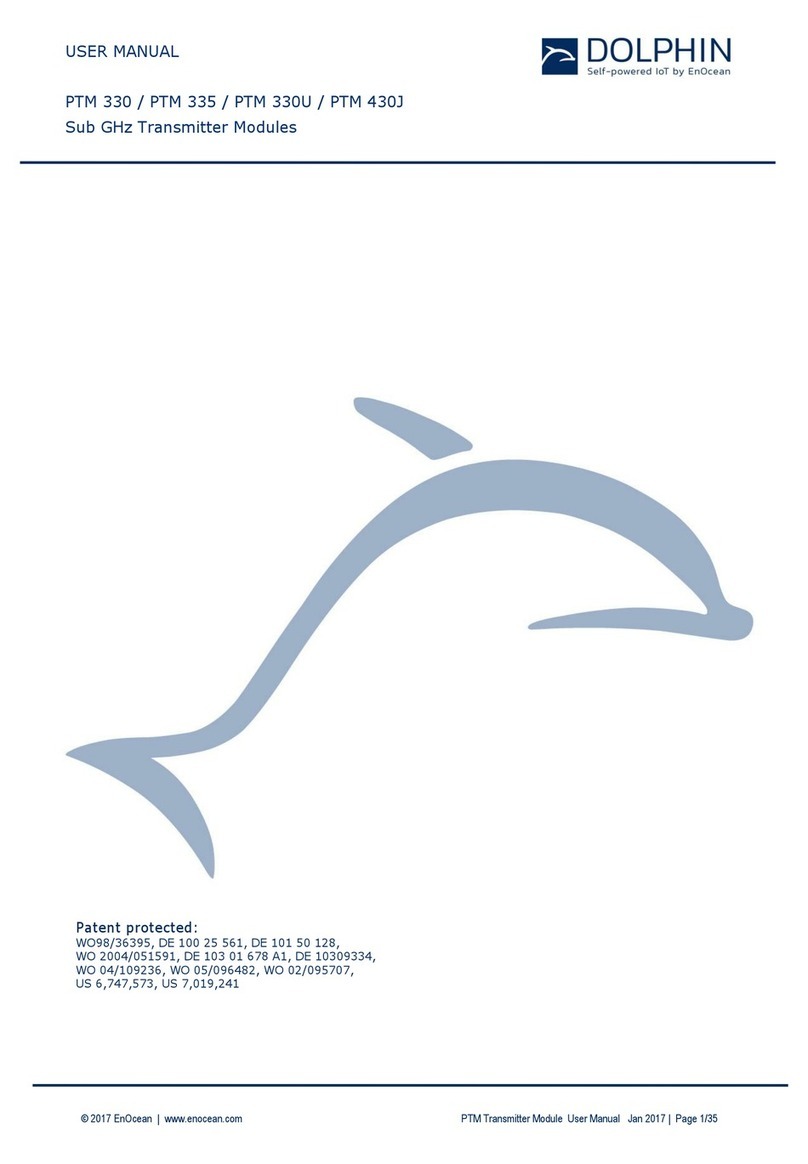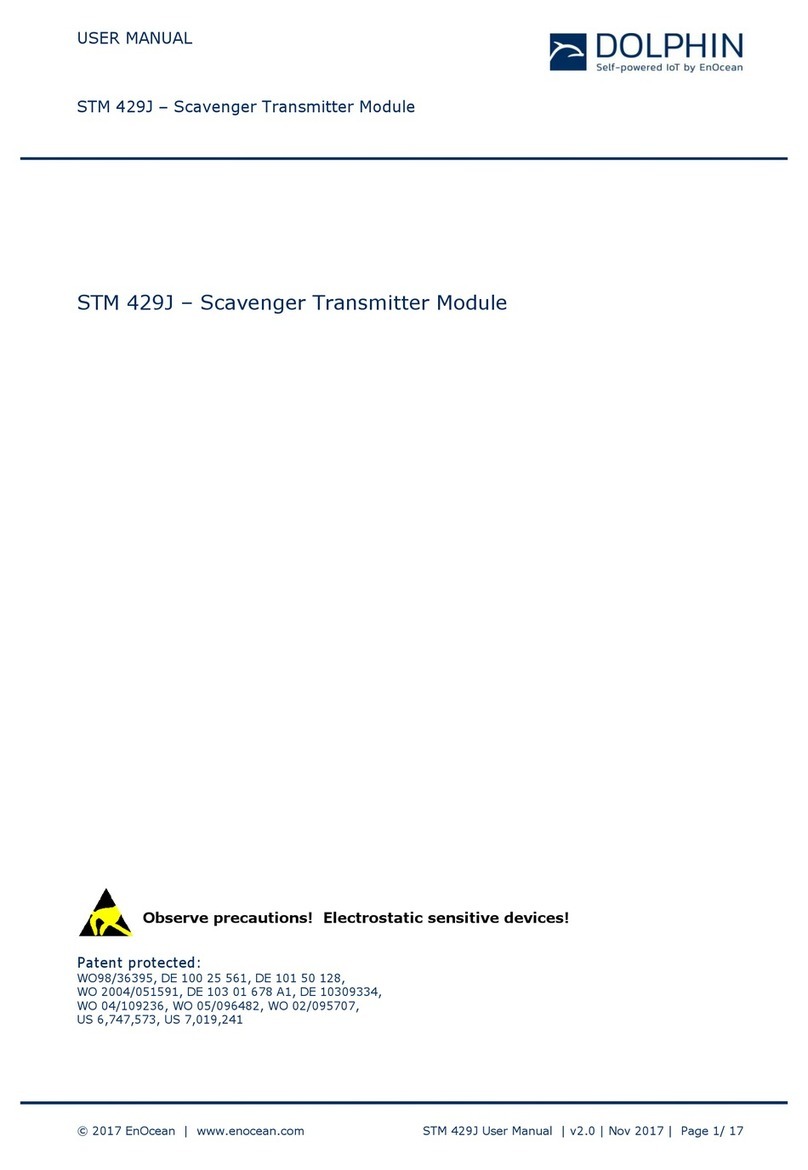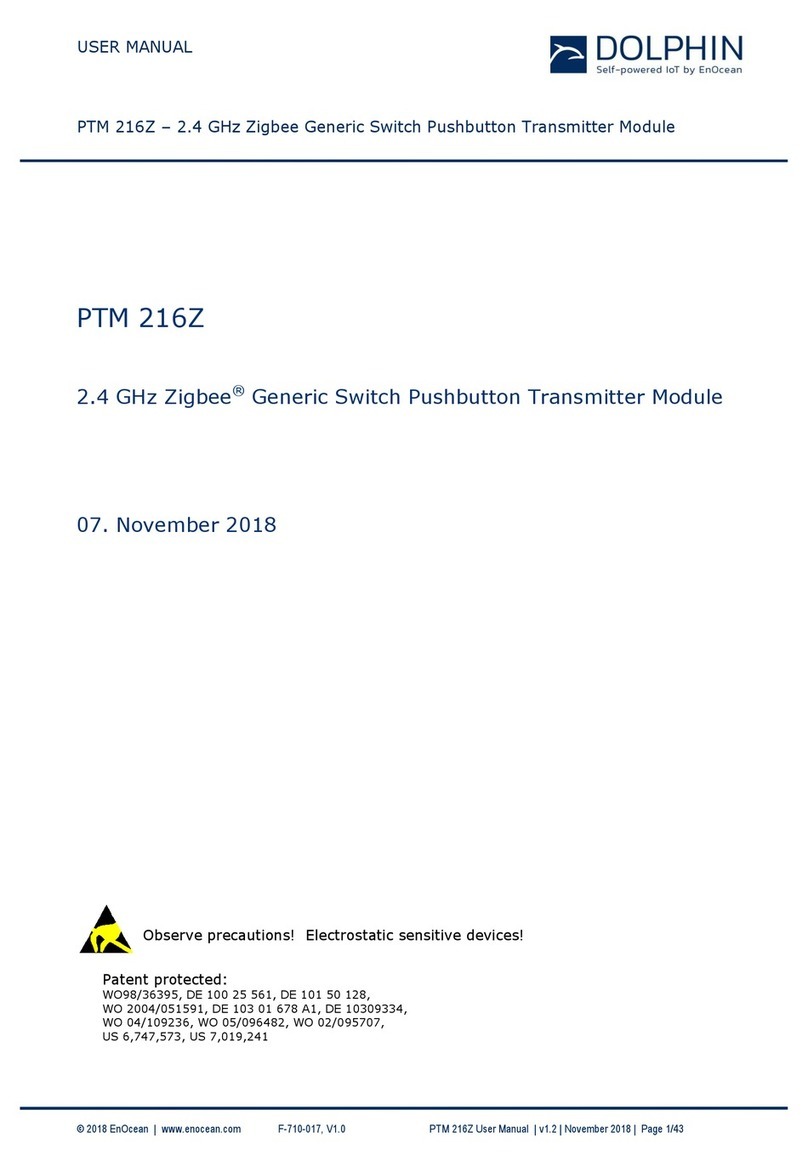USER MANUAL
STM 431J – Scavenger Transmitter Module
© 2017 EnOcean | www.enocean.com STM 431J User Manual | v2.0 | Nov 2017 | Page 3/ 34
TABLE OF CONTENT
1GENERAL DESCRIPTION .................................................................................4
1.1 Basic functionality .........................................................................................4
1.2 References ...................................................................................................5
1.3 Technical data...............................................................................................6
1.4 Physical dimensions.......................................................................................6
1.5 Environmental conditions ...............................................................................8
1.6 Ordering Information .....................................................................................9
2FUNCTIONAL DESCRIPTION..........................................................................10
2.1 Simplified firmware flow chart and block diagram............................................10
2.2 Pin out.......................................................................................................11
2.3 Pin description and operational characteristics.................................................12
2.3.1 GPIO supply voltage ................................................................................14
2.3.2 Analog and digital inputs ..........................................................................14
2.3.3 Temperature sensor.................................................................................15
2.3.4 Programming Interface.............................................................................15
2.4 Absolute maximum ratings (non operating) ....................................................16
2.5 Maximum ratings (operating)........................................................................16
2.6 Power management and voltage regulators ....................................................16
2.7 Configuration..............................................................................................17
2.7.1 Configuration via pins – depreciated ..........................................................17
2.8 Configuration via programming interface........................................................18
2.8.1 EEP Configuration....................................................................................18
2.8.2 GP Configuration .....................................................................................19
2.8.3 Security Configuration..............................................................................19
2.9 Radio telegram............................................................................................21
2.9.1 Normal operation – standard and enhanced security mode ...........................21
2.9.2 Teach-in telegram - standard and enhanced security mode...........................21
2.10 Secure radio telegram - STM 431 J ...........................................................21
2.10.1Switching between modes ........................................................................21
2.10.2Encrypted communication - Enhanced security mode ...................................22
2.10.3Security Teach-In - Enhanced security mode..............................................22
2.10.3.1 PSK Security Teach-in - Enhanced security mode - optional....................23
2.11 Transmit timing......................................................................................23
2.12 Charging circuitry ...................................................................................24
2.13 Energy consumption ...............................................................................24
3APPLICATIONS INFORMATION.......................................................................26
3.1 Using the WAKE pins....................................................................................26
3.2 Temperature sensor.....................................................................................27
3.3 Set point control and occupancy button..........................................................27
3.4 Combination with humidity sensor module HSM 100 ........................................27
3.6 EEPROM Storage for the Rolling code.............................................................28
3.6.1 Included Information: ..............................................................................28
3.6.2 QR-Code Specification..............................................................................28
3.7 Antenna layout............................................................................................29
3.7.1 Whip antenna (STM 430J).........................................................................29
3.7.2 Helical antenna (STM 431J) ......................................................................30
3.8 Mounting STM 431J into a housing.................................................................31
3.9 Transmission range .....................................................................................32
4AGENCY CERTIFICATIONS ............................................................................33






























